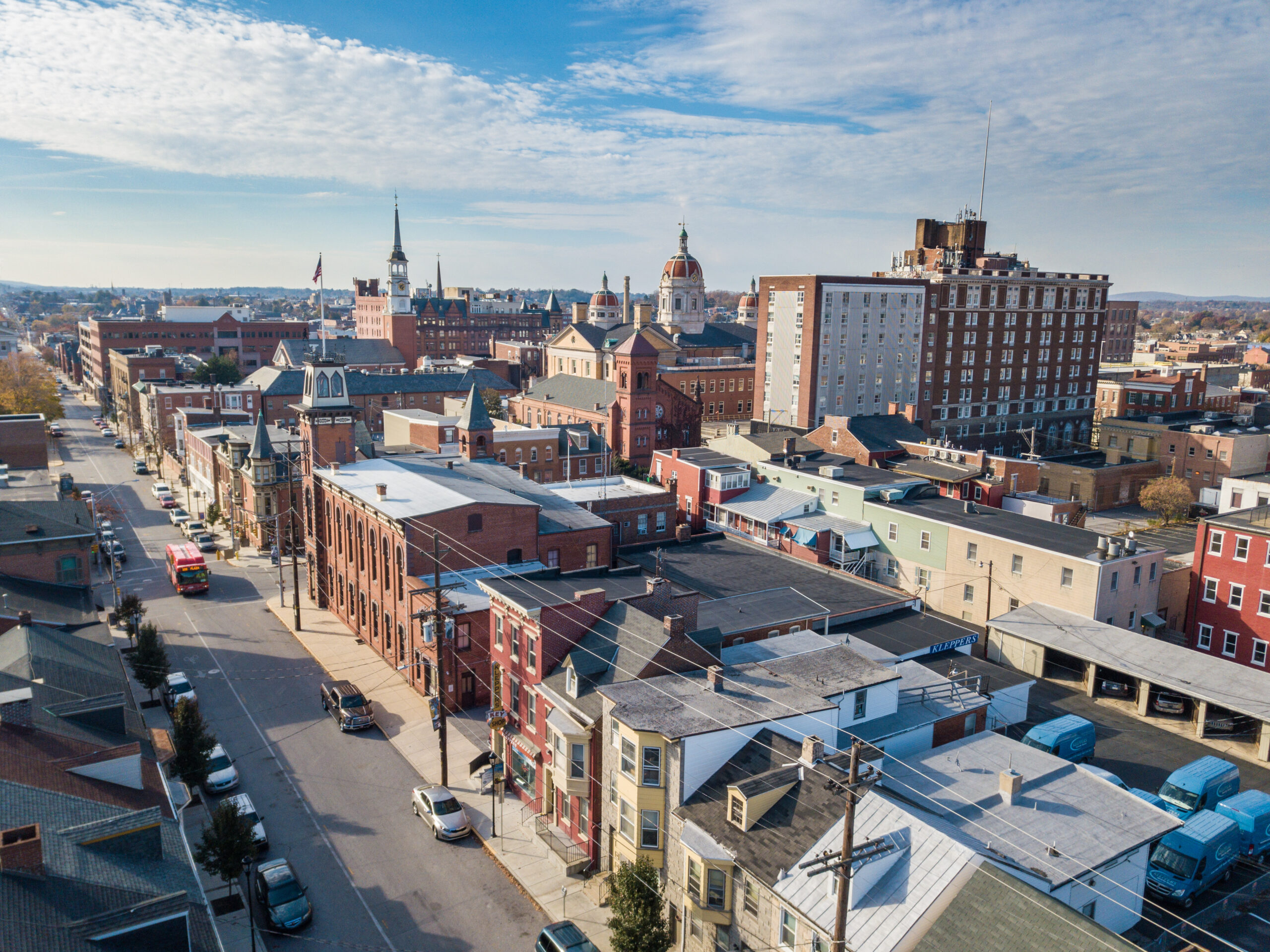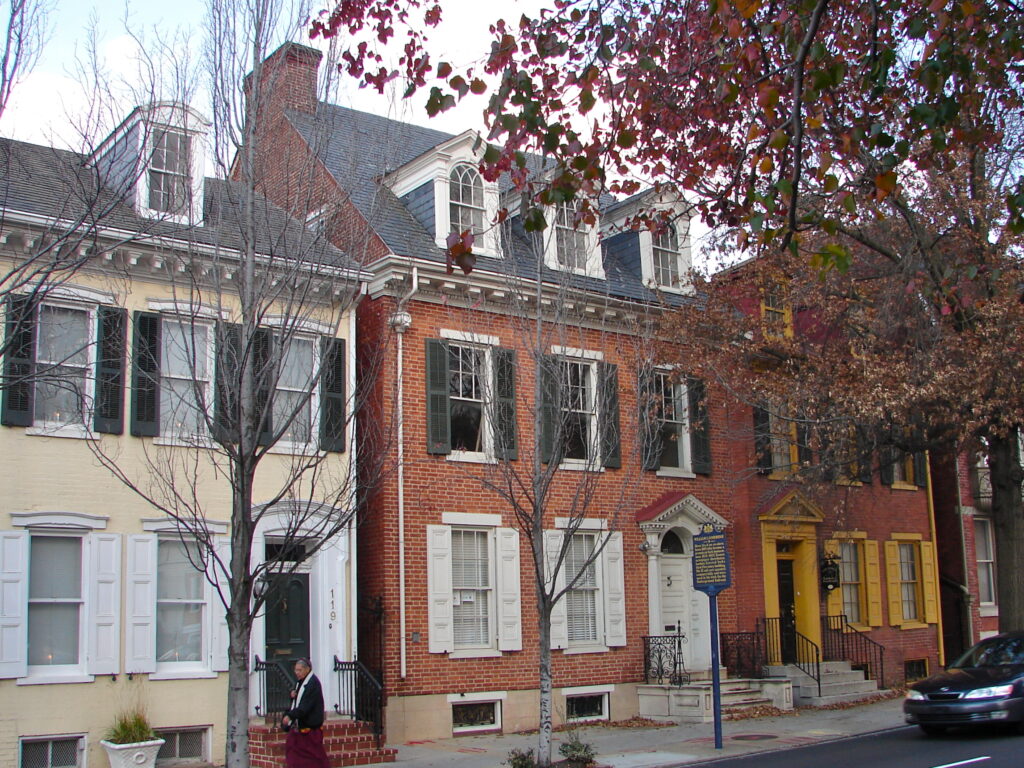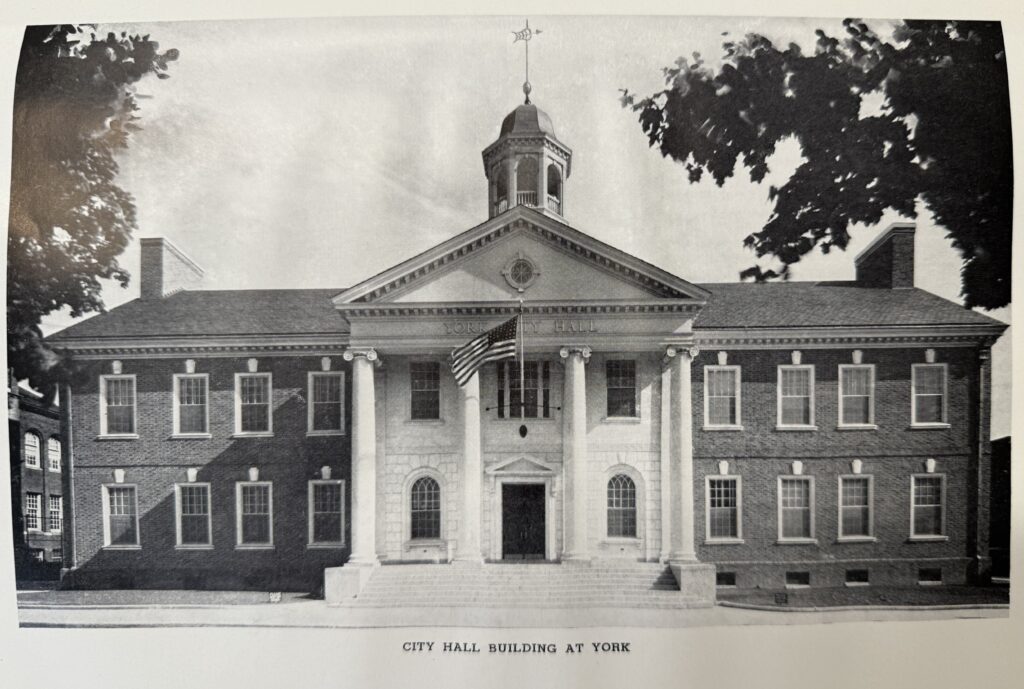SUBMITTED BY JOHN BRENNER, EXECUTIVE DIRECTOR, THE LEAGUE
It all began when York Mayor Frank Guise, sensing that smaller cities shared common concerns, invited a small group of city mayors to meet in York for a convention of the newly formed League of Third-Class Cities in 1900. It’s no surprise that York was a leader in forming the new League. York is a city of “firsts.”
It was in fact Yorktowne (as it was then known) where the 2nd Continental Congress met for nine months in 1777. As the British captured Philadelphia, the delegates decided to move across the provincial courthouse on the square. During its time as our nation’s first capital, the Congress adopted a national thanksgiving proclamation, thwarted the Conway Cabal, and adopted the Articles of Confederation. A sculpture of the Marquis De Lafayette exists today along West Market Street in front of the Gates House and Plough Tavern where it is believed that his toast to General George Washington derailed Conway’s plan to replace Washington during a string of battle defeats.

John Adams referred to York in his correspondence as a “dirty little town.” Roads were basically muddy trails which had been forged out of the woods by native peoples a century or two earlier. Adams comment probably wasn’t far off, especially when it rained, and the muddy trails become nearly impassable by foot or by buggy.
In another first, in 1816, members of the York community came together to form the York Water Company to protect the town from fire and to provide a clean, reliable supply of drinking water. This was the first water treatment plant in Pennsylvania and used wooden logs to transport water from the Codorus Creek to 35 homes. According to York Water Company’s history, this early example of a public/private partnership is the nation’s oldest investor-owned utility.
During the Civil War, the Confederate Army occupied the town and lowered the U.S. flag and replaced it with the Stars and Bars. Penn Park, one of the largest public spaces for a town its size, served as a field hospital and Union encampment following the Battle of Gettysburg.

A Black American abolitionist and a conductor on the Underground Railroad, William C. Goodridge was a prominent businessman in York in the mid 1800’s. According to York’s history, Goodridge and his wife, Evalina Wallace Goodridge, started with a barbershop and built a significant estate through diverse investments and enterprises. The town became an industrial powerhouse with factories and mills lining Codorus Creek. The creek, and York’s location along the Northern Central Railway allowed it to grow as a transportation and industrial hub. The borough became incorporated as a city in 1887, hosting the first convening of the new League of Third-Class Cities.
Mayor Guise would be elected the League’s first President. Over the decades, York has been active in The League with numerous mayors serving on the Board of Directors and as Presidents of the Association. Mayor E.S. Hugentugler served as President of the League in 1919-1921 and Councilmember A.L Hydeman in 1964-1966. Mayor William J. Althaus would serve as President in 1987-1988 (then go on to serve as President of the U.S. Conference of Mayors). In recent years, Mayor John S. Brenner served as President in 2005-2006 and Mayor C. Kim Bracey served as President in 2017.
York Then and Now
In The League archives, in the early 1940s, York’s new City Hall was a major point of discussion and pride. The new City Hall would be designed so that “an automobile could be driven around the entire building for police or ambulance service” and to allow for light and air flow on all sides of the structure. It was designed in the Colonial style to reflect York’s history, but also included the newest codes in fireproofing, plumbing and electricity. Boasting a grand, marble portico with columns, the building had steam heating and allowed for air conditioning in the summer. Construction cost $225,000. The program at the grand dedication ceremony detailed the hopes that the building was a sign of new, increased cooperation between York residents and their officials. “This is your building, and we trust that it will be the means of closer co-operation between the people of York and the men you have chosen to represent you.”
With The League’s advocacy and support, York’s infrastructure has grown from cobblestones and wooden bridges to a sophisticated network of roads and highways. Interstate 83 and Route 30 connect the city to regional and national destinations. Public transportation has evolved with Rabbit Transit providing bus services, and the city’s downtown has undergone significant revitalization, with improved roadways, pedestrian-friendly areas, parks, bike lanes, and green and blue ways such as the Codorus Greenway Project. The York Peppermint Pattie was created in York, and Pfaltzgraff, Glatfelter Paper Company, Pullman Automobiles, Dentsply-Sirona, and Stauffer Biscuit Company all started in York. Now the city’s businesses have diversified with healthcare, education, and technology sectors being primary employers.

The evolution of York from a colonial settlement to a modern city reflects the resilience and adaptability of its people. While its historical roots remain a source of pride, York continues to innovate and grow, balancing preservation with progress.